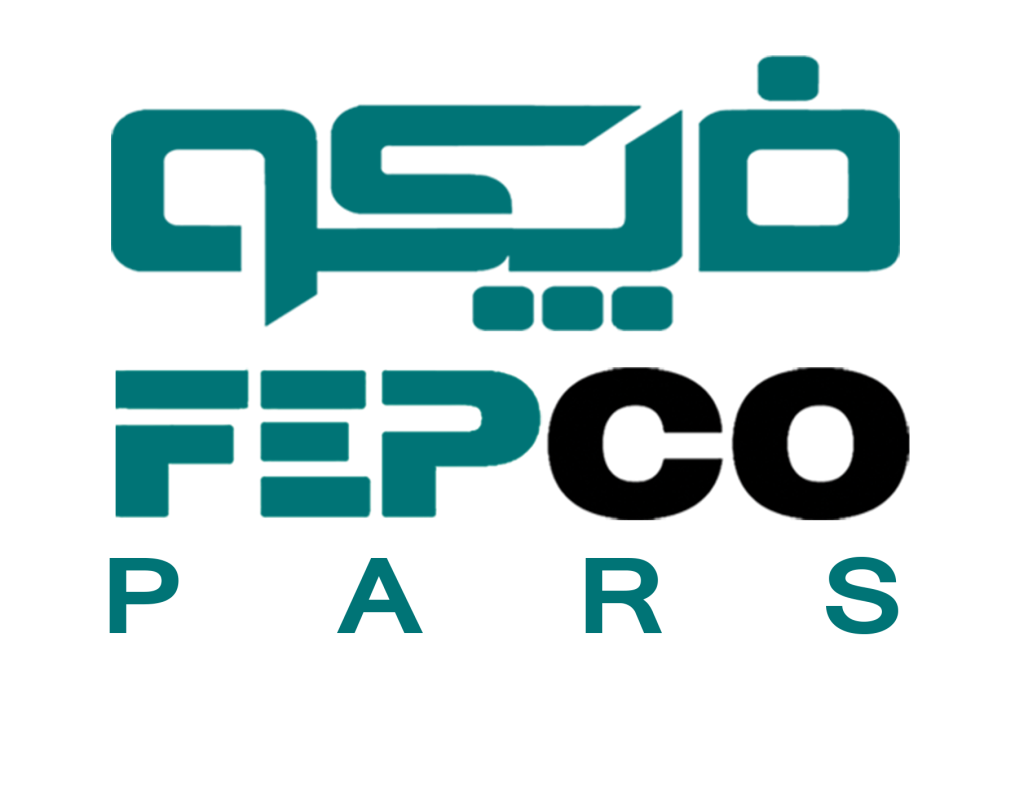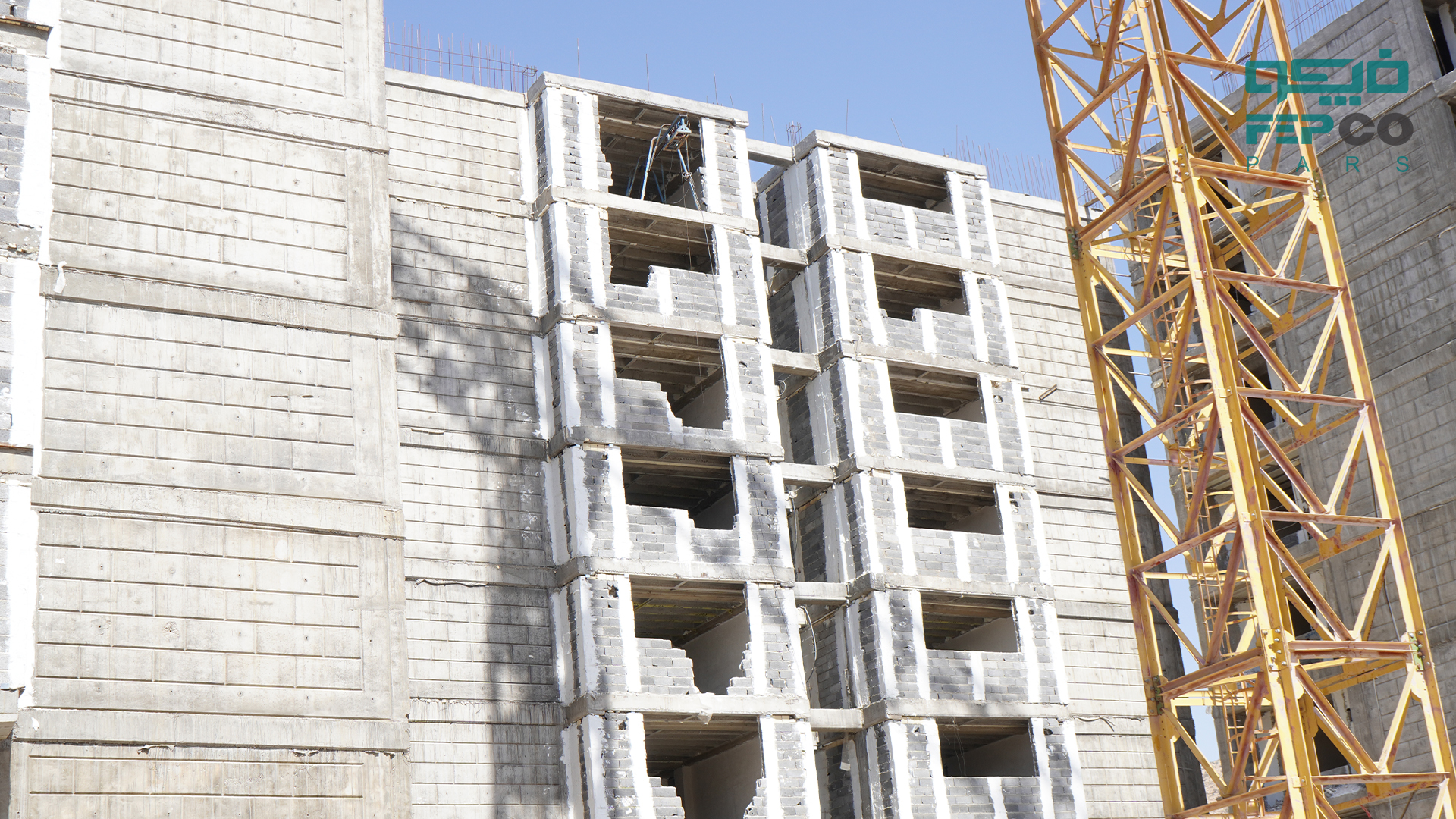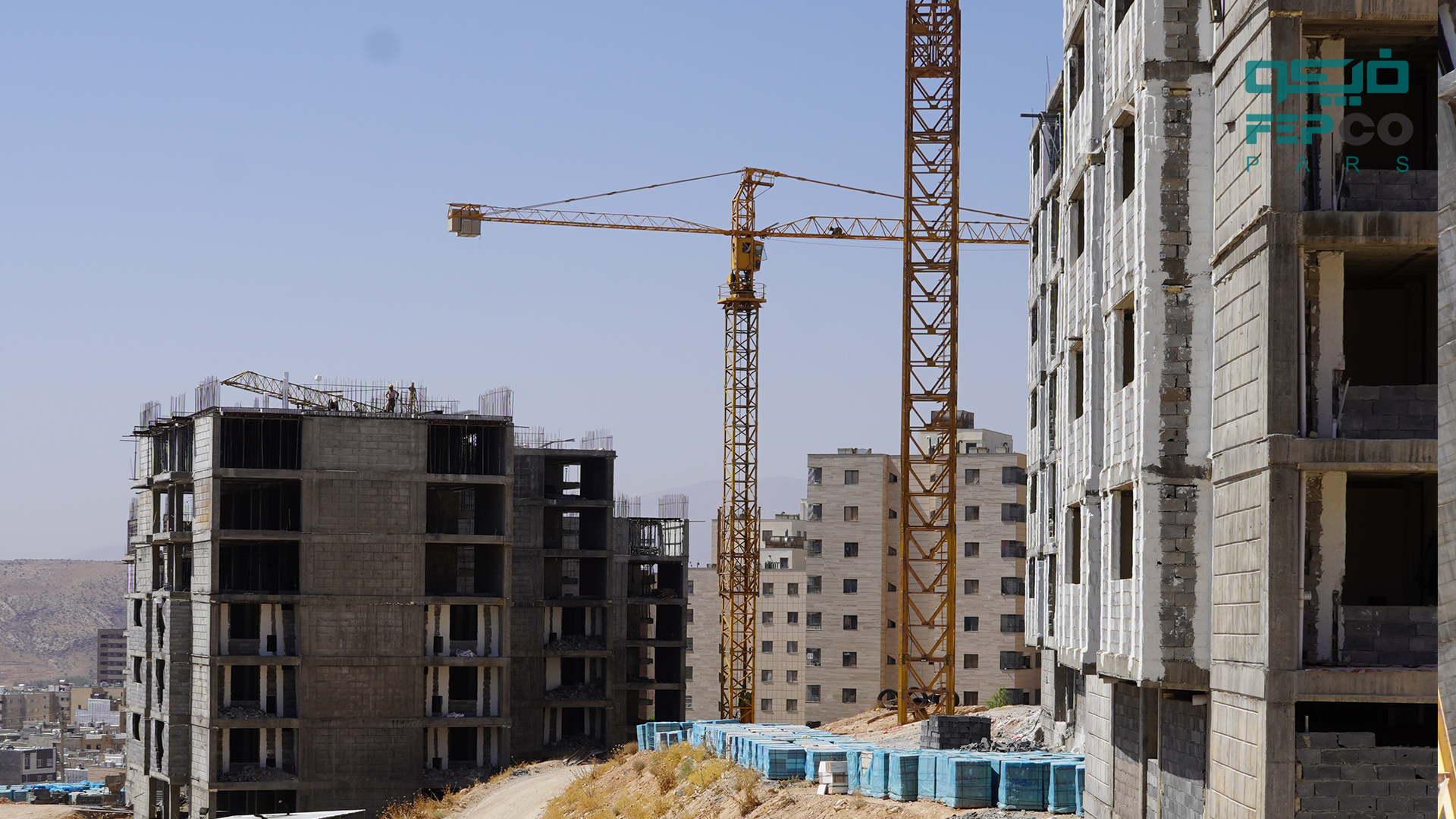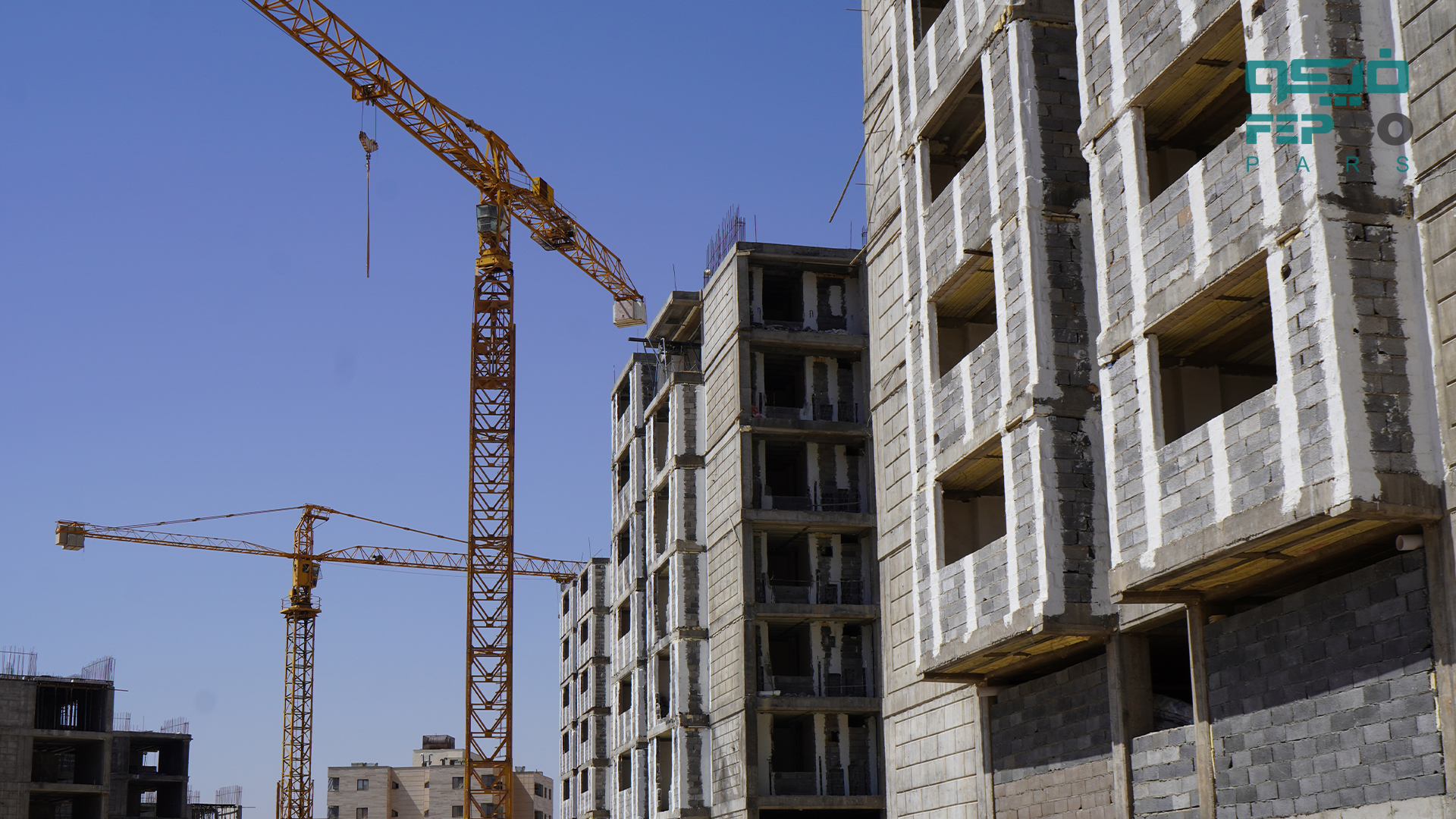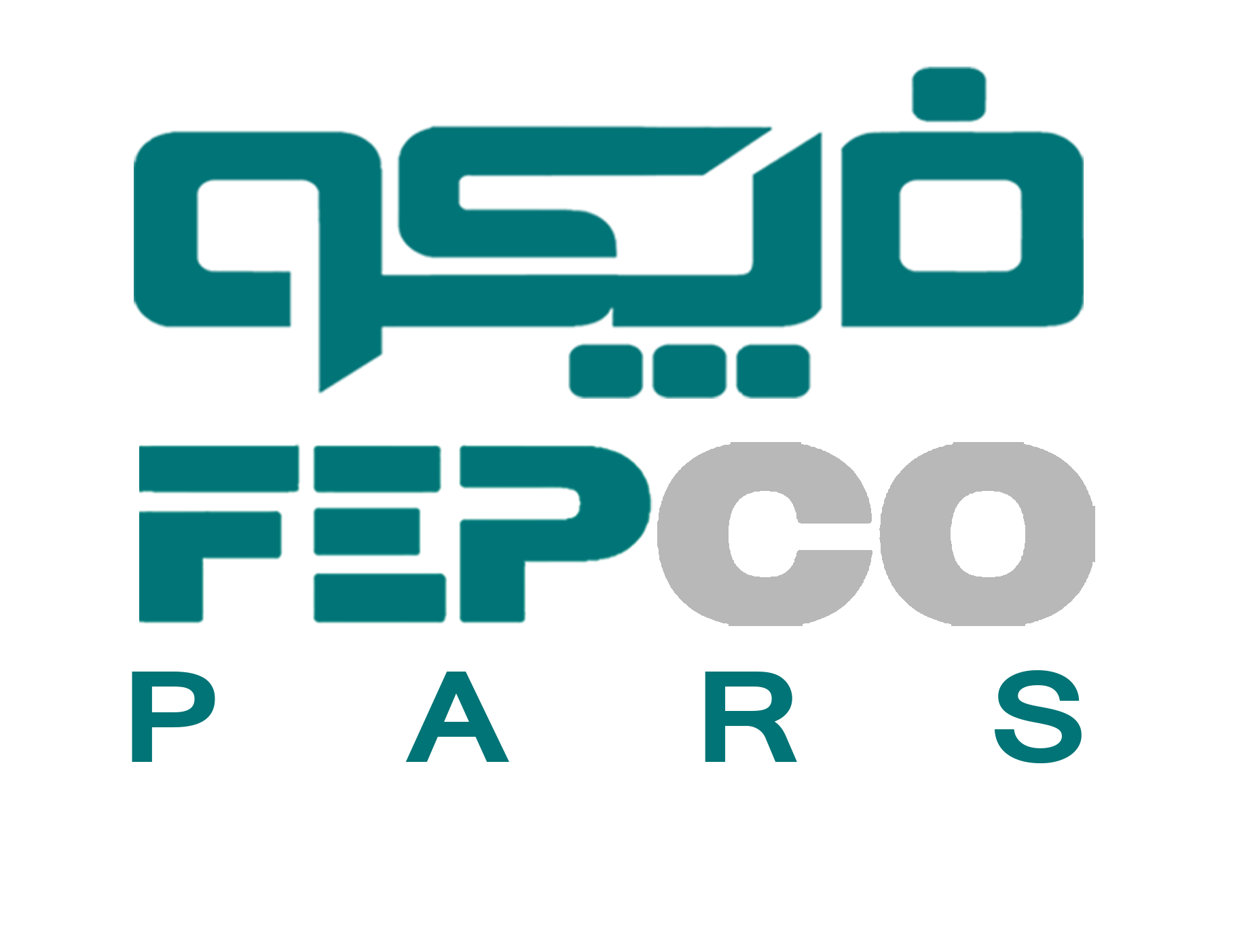This article provides a thorough examination of the challenges and opportunities facing the construction industry in Iran, offering practical solutions for sustainable development. Key concepts such as the construction industry, sustainable development, modern technologies, and green construction are explored in depth. Additionally, the importance of sustainable architecture, innovative building materials, and energy consumption optimization in construction projects is highlighted.
The article reviews the future outlook of Iran’s construction industry and sustainable solutions in Iran’s construction sector. It also emphasizes the critical role of modern technologies in the construction industry and their impact on developing sustainable infrastructure in Iran. One of the primary focuses of this research is the use of renewable energy in construction projects and the optimization of energy consumption in the building sector, which can significantly contribute to achieving sustainable development goals.
Moreover, the article addresses the influence of green materials on sustainable development and the significance of sustainable and smart architecture in construction. Given the current challenges faced by Iran’s construction industry, analyzing the challenges and opportunities for sustainable development and the role of modern technologies in transforming the construction industry is crucial and thoroughly covered in this article.
This research, prepared by Fepco ( Saman Mechanical Process Energy Pars ), offers solutions for sustainable development in Iran’s construction industry. Considering environmental challenges and the increasing demand for reducing energy consumption, the use of modern technologies and sustainable materials can help achieve long-term goals in green construction and the development of sustainable infrastructure.
The Future Outlook of Smart Urban Development in Iran and Its Impact on Urban Infrastructure
Smart urban development in Iran is considered one of the key modern approaches to improving the quality of urban life and reducing the strain on urban infrastructure. In the coming decades, Iranian cities will leverage smart technologies to enhance efficiency, optimize energy and resource consumption, and improve urban management. This article delves into the future outlook of smart urban development and its impact on urban infrastructure.
1. Energy Consumption Optimization
– Outlook: By using smart technologies, Iranian cities can widely implement energy consumption optimization in buildings and urban infrastructure. For example, smart energy management systems can monitor and optimize electricity and water usage.
– Impact: Reduced energy consumption, decreased urban costs, and reduced greenhouse gas emissions.
2. Smart Traffic Management
– Outlook: The use of advanced technologies such as sensors, cameras, and AI systems for urban traffic management will reduce congestion, optimize road usage, and cut travel times. Smart public transportation systems can also play a vital role in facilitating urban mobility.
– Impact: Less traffic, faster commutes, and improved air quality in major Iranian cities.
3. Development of Digital Infrastructure
– Outlook: Given the need for fast and efficient communication, the development of digital infrastructure such as high-speed internet, cloud systems, and IoT networks in future smart cities in Iran will be essential.
– Impact: Creation of smart cities with advanced digital capabilities, enhancing public services and improving the quality of life for citizens.
4. Smart Waste Management
– Outlook: Smart cities, through the use of sensors and intelligent systems, can optimize waste management and reduce the amount of waste produced. Automated recycling systems and waste transport technologies will further enhance efficiency in this sector.
– Impact: Reduced environmental pollution and cleaner cities.
5. Sustainable Public Transportation
– Outlook: The development and use of sustainable and smart public transportation systems, such as electric buses, smart metros, and shared bicycles, will help reduce pollution and fossil fuel consumption in Iranian cities.
– Impact: Increased access to efficient public transportation, reduced fuel costs, and improved air quality.
6. Smart Water and Energy Infrastructure
– Outlook: The use of smart technologies for managing water and energy resources, including smart consumption control and distribution systems, will allow cities to utilize these resources more efficiently and sustainably.
– Impact: Reduced water and energy waste and ensured sustainable access to these resources for urban populations.
7. Expansion of Green and Sustainable Spaces
– Outlook: Iranian smart cities can utilize intelligent design to optimally distribute green spaces, contributing to improved air quality and mitigating the effects of climate change. Additionally, smart irrigation systems can make efficient use of water resources.
– Impact: Enhanced public health, reduced urban temperatures, and increased biodiversity.
8. Increased Urban Security
– Outlook: The use of advanced technologies such as surveillance cameras, AI systems, and biometric technologies can enhance urban security and aid in better crisis management.
– Impact: Reduced crime rates and improved public safety.
Smart urban development in Iran, driven by modern technologies, renewable energy, and smart management of resources and infrastructure, will pave the way for sustainable development and improved quality of life. This approach will lead to optimized energy consumption, reduced pollution, better urban management, and increased efficiency of urban infrastructure. Future smart cities in Iran, as models of sustainable urban development, will play a key role in addressing urban and environmental challenges.
Key Challenges Facing Iran’s Construction Industry in Sustainable Development:
1. Lack of Infrastructure and Modern Technologies:
The use of advanced technologies in construction projects, such as energy management systems and smart construction, is not yet widespread. Limited access to modern technologies hinders the adoption of optimal methods for reducing energy consumption and minimizing environmental impact.
2. High Energy Consumption:
Energy consumption in buildings, particularly in heating and cooling, is exceptionally high in Iran. Insufficient use of renewable energy systems and lack of energy optimization in building design pose a significant challenge to achieving sustainable development goals.
3. Non-Sustainable Building Materials:
Many construction projects in Iran still rely on building materials with negative environmental impacts. The lack of widespread use of green and recycled materials increases environmental pollution and is not in line with sustainability principles.
4. Deterioration of Urban Infrastructure:
A large portion of Iran’s urban infrastructure is outdated and inefficient, requiring renovation and modernization to align with sustainability standards. In major cities, issues such as traffic congestion and excessive energy consumption are exacerbated by aging infrastructure.
5. Inadequate Policy Framework:
The absence of clear government policies and regulations regarding sustainable development and green buildings is one of the primary challenges. Current policies are neither comprehensive nor enforceable enough to promote and encourage sustainable construction.
6. High Costs:
Implementing sustainable construction methods and using modern technologies often incur higher costs compared to traditional methods. While these investments lead to long-term energy savings and environmental preservation, they present a significant financial burden for many projects in the short term.
7. Environmental Pollution:
Traditional construction methods in Iran continue to contribute to environmental pollution, including construction waste and greenhouse gas emissions. Poor management of construction waste and reliance on outdated technologies worsen this issue.
8. Lack of Education and Awareness:
Many builders and engineers in Iran lack sufficient knowledge of sustainable development concepts and green construction techniques. This gap in education and awareness is a major obstacle to progress in this field.
9. Deficiency in Smart Urban Planning:
In many Iranian cities, smart urban planning—which involves optimizing urban infrastructure and utilizing digital technologies—is still in its early stages. This deficiency reduces efficiency and increases resource consumption in cities.
10. Climate Change and Water Scarcity:
Climate change and decreasing water resources in Iran pose major challenges for construction and sustainable development. Water resource management and its efficient use in construction projects are critical issues that must be addressed in the future.
These challenges require precise planning, appropriate policy-making, and increased public awareness for Iran’s construction industry to move toward sustainable development.
Sustainable Infrastructure Development in Iranian Cities: Implementable Solutions
Developing sustainable infrastructure in Iranian cities requires diverse solutions that align with the country’s economic, social, and environmental conditions. The following are implementable solutions for sustainable infrastructure development in Iranian cities:
1. Utilizing Renewable Energy
– Solution: One of the primary solutions is to use renewable energy sources such as solar and wind energy in urban infrastructure. These energy sources can power city utilities, street lighting, and buildings.
– Benefits: Reduced reliance on fossil fuels, decreased air pollution, and lower long-term energy costs.
2. Optimizing Energy Consumption in Buildings
– Solution: Utilizing smart technologies and insulated building materials can help reduce energy consumption in residential and commercial buildings. High-efficiency heating and cooling systems, along with LED lighting, are part of this optimization.
– Benefits: Reduced energy costs and minimized environmental impact through less resource consumption.
3. Developing Sustainable Public Transportation
– Solution: Expanding public transportation systems such as electric buses, subways, and shared bicycles across cities is one of the most effective ways to reduce traffic and air pollution. Additionally, installing electric vehicle charging stations throughout the city can encourage the use of electric vehicles.
– Benefits: Reduced traffic, lower greenhouse gas emissions, and decreased fossil fuel consumption.
4. Sustainable Water and Wastewater Management
– Solution: Developing systems for collecting and recycling rainwater for non-drinking uses, using advanced water purification technologies, and implementing efficient wastewater systems can help conserve water resources. Reusing water in arid regions is especially crucial.
– Benefits: Reduced water waste, conservation of water resources, and minimized groundwater pollution.
5. Green Construction and Use of Sustainable Materials
– Solution: Encouraging the use of sustainable building materials such as recycled concrete, recycled steel, and durable wood in construction projects can contribute to sustainable infrastructure development. Prefabrication technologies can also reduce construction waste.
– Benefits: Reduced construction waste, lower carbon emissions, and long-term cost savings in construction.
6. Developing Smart Cities
– Solution: Implementing digital technologies and artificial intelligence to manage urban resources, such as smart traffic systems, automated lighting, and waste management, can make cities more efficient. Smart cities use sensors and data analysis to optimize energy consumption and improve quality of life.
– Benefits: Optimized energy use, reduced urban maintenance costs, and increased efficiency of urban systems.
7. Expanding Green Spaces and Managing Natural Resources
– Solution: Expanding green spaces in urban areas and public parks not only helps improve air quality and reduce heat effects but also contributes to the mental and physical health of residents. Using drought-resistant plants and smart irrigation systems can effectively manage water resources.
– Benefits: Reduced air pollution, improved urban environments, and increased biodiversity in cities.
8. Promoting Sustainable Architecture
– Solution: Designing buildings in harmony with the local climate and taking advantage of natural light and ventilation are key aspects of sustainable architecture. This includes low-energy structures and the use of environmentally friendly materials sourced locally.
– Benefits: Reduced energy consumption, minimized environmental impact, and improved quality of life.
9. Recycling and Urban Waste Management
– Solution: Developing waste recycling infrastructure and managing construction waste to reduce landfill use and encourage the reuse of recycled materials in construction projects. Promoting waste separation at the source can help reduce the volume of urban waste.
– Benefits: Reduced landfill use, decreased soil pollution, and the use of recycled materials in construction.
10. Enhancing Education and Public Awareness
– Solution: Educating the public, engineers, and builders about sustainable development concepts and modern technologies is essential. Offering training courses to government agencies and construction companies on sustainable construction methods and reducing environmental impact can be highly effective.
– Benefits: Increased public awareness, higher demand for green projects, and greater sustainability in the construction industry.
By implementing these solutions, Iranian cities can move toward sustainable development. These actions not only help improve the urban environment and reduce resource consumption but also enhance the quality of life for citizens, preparing cities for a better future.
Conclusion
The analysis in this article clearly shows that Iran’s construction industry faces numerous challenges and opportunities in the realm of sustainable development. Given the urgent need to reduce energy consumption, mitigate environmental impacts, and enhance the quality of life for citizens, the use of modern technologies and green construction approaches will play a key role in the future of Iran’s construction industry.
Proposed solutions, such as using green building materials, adopting renewable energy, and designing sustainable architectural projects, can effectively contribute to reducing pollution and optimizing energy consumption in construction projects. Developing sustainable urban infrastructure and leveraging smart urban planning principles are also strategies that can lead to fundamental changes in the future outlook of Iran’s construction industry.
One of the most important aspects of this research is optimizing energy consumption in the construction industry, which can be achieved through modern technologies and green design approaches. Additionally, the use of renewable energy in construction projects not only reduces dependency on fossil fuels but also plays a crucial role in lowering greenhouse gas emissions.
Given the impact of green materials on sustainable development and the transformative role of modern technologies in the construction industry, Fepco ( Saman Mechanical Process Energy Pars ) can take significant steps toward achieving sustainable development goals and improving its position in Iran’s construction industry by implementing the proposed solutions and adopting new technologies. This will also help strengthen the company’s competitiveness in both domestic and international markets.
In conclusion, the challenges and opportunities presented in this study indicate that Iran’s construction industry requires fundamental changes in its traditional approaches. Investment in modern technologies, development of sustainable infrastructure, and the promotion of sustainable and smart architecture can lead to a greener and more sustainable future for the industry and the country.
Frequently Asked Questions
1. What is the future outlook for the construction industry in Iran?
The future outlook for Iran’s construction industry is moving toward greater use of modern technologies, developing sustainable infrastructure, and increasing the adoption of green architecture and renewable energy principles. These changes will help improve energy efficiency and reduce environmental impacts.
2. What does sustainable development in Iran’s construction industry mean?
Sustainable development in the construction industry refers to designing and constructing buildings that minimize resource and energy consumption while causing the least environmental harm. This includes using recycled materials, energy optimization technologies, and environmentally friendly designs.
3. How can renewable energy be utilized in construction projects?
Renewable energy, such as solar and wind energy, can be used in construction projects. Installing solar panels on building roofs or using clean energy-powered ventilation and lighting systems are practical ways to take advantage of these resources.
4. What new technologies have been introduced in Iran’s construction industry?
Technologies such as smart energy management systems, digital design through BIM, advanced eco-friendly building materials, and state-of-the-art heating and ventilation systems are among the new technologies being applied in Iran’s construction industry.
5. What is green construction, and how does it differ from traditional methods?
Green construction involves using sustainable materials, designing buildings with low energy consumption, and optimizing resource use. While traditional methods may consume more resources and have greater environmental impacts, green construction helps reduce these effects.
6. What are the main challenges to sustainable development in Iran’s construction industry?
Some of the main challenges include the lack of modern technology, the high costs of implementing sustainable projects, insufficient government policies, and a lack of sufficient awareness and education about sustainable development.
7. How does sustainable architecture help optimize energy consumption?
Sustainable architecture reduces energy consumption in buildings by using natural light, incorporating insulated materials, and designing structures that facilitate natural ventilation and heating. These methods reduce reliance on fossil fuels and increase building efficiency.
8. What are some ways to optimize energy consumption in buildings?
Some solutions for optimizing energy consumption include installing solar panels, using proper insulation, setting up high-efficiency heating and cooling systems, and utilizing smart energy management systems.
9. How do sustainable building materials contribute to sustainable development?
Sustainable building materials such as recycled concrete, recycled steel, and renewable woods help reduce environmental impacts and conserve natural resources. These materials also improve construction quality and increase the lifespan of buildings.
10. How can Fepco contribute to sustainable development in Iran’s construction industry?
Fepco can play a significant role in advancing sustainable development in Iran’s construction industry by focusing on research and development in modern technologies, using renewable energy and sustainable materials, and offering green construction solutions.

